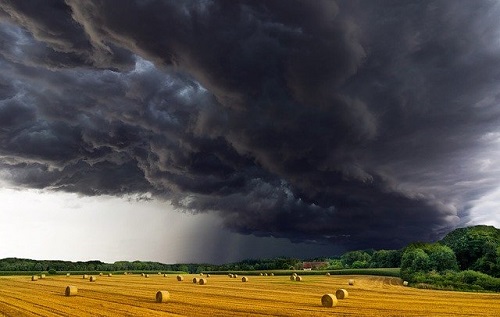A recent report from Swiss Re Institute has highlighted how four climate-related weather perils – floods, tropical cyclones, winter storms in Europe and severe thunderstorms, that now cause annual losses of USD 200 billion, are said to be “intensifying to varying degrees.”
 In a recent blog posted by
In a recent blog posted by
In addition, SRI’s analysts also showcased how a multifaceted approach combining climate mitigation, adaptation, and financial protection can help prepare society for increasing loss risks, as well as equip public and private sector leaders with good decision-making tools, and better support recovery for when disasters do strike.
For a number of years now, the reinsurance giant has been tracking natural catastrophe loss trends that have been driven mainly by human factors: economic growth, urbanisation, the accumulation of valuable assets in areas vulnerable to threats.
However, urging post-pandemic inflation has played a crucial role too, lifting repair costs from significant events ranging from hurricane Laura, winterstorm Uri, and hurricane Ian.
The contribution of a changing climate to losses from natural catastrophes has so far been only limited, but this is likely to change, adds
Going forward, SRI’s analysts have underscored how the industry must begin to increasingly consider the rising intensity of storms themselves. With the planet getting warmer, storms are anticipated to become even bigger loss drivers.
It is important to address how some regions are particularly vulnerable to hazard intensification, with Asian economies such as Indonesia, Thailand, China, India, and the Philippines all facing elevated threats from economic losses linked to extremer weather.
These economies all have big insurance protection gaps too, which essentially leaves them less able to recover when catastrophes do indeed strike.
“A first pillar of addressing the forces of hazard intensification remains climate mitigation, the greenhouse gas emission cuts needed to contain global temperature increases,”
osts associated with climate change are just starting to impact consumers, and as hazard intensification is anticipated to become a driver of future economic losses, he states that the “industry must capture this in its models and underwriting, to keep pace with evolving risks.”
“Focused underwriting can support our clients’ climate-positive transitions, while parametric insurance leverages strengths of the public and private sectors to protect more people in exposed regions. There’s also a wider role for re/insurers, including by deploying our financial resources toward long-term investments in projects suited for more volatile future weather.”


